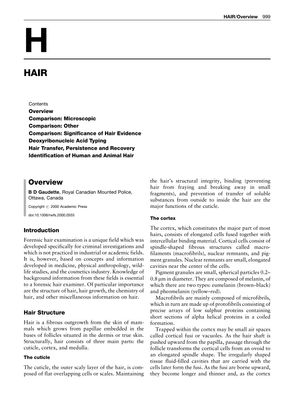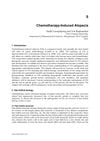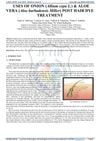Hair: Overview
January 2000
in “
Elsevier eBooks
”

TLDR The document explains how hair is studied in forensics to identify its source and its role in criminal investigations.
The document from 2000 provides a detailed overview of forensic hair examination, discussing the structure, growth, chemistry, and function of human and animal hair. It explains the three main parts of hair (cuticle, cortex, and medulla), the hair growth cycle (anagen, catagen, telogen), and the composition of human hair, which includes protein, water, lipids, pigment, and trace elements. The overview also covers the variability in hair color and the factors that cause color changes, such as graying, and notes the relevance of hair defects and diseases in forensic examinations. Additionally, it outlines the history and evolution of forensic hair microscopy, its application in criminal investigations, and the limitations of using trace element analysis for hair comparison. The importance of hair in forensic science is emphasized, particularly in the microscopical comparison of hairs to determine their source.





